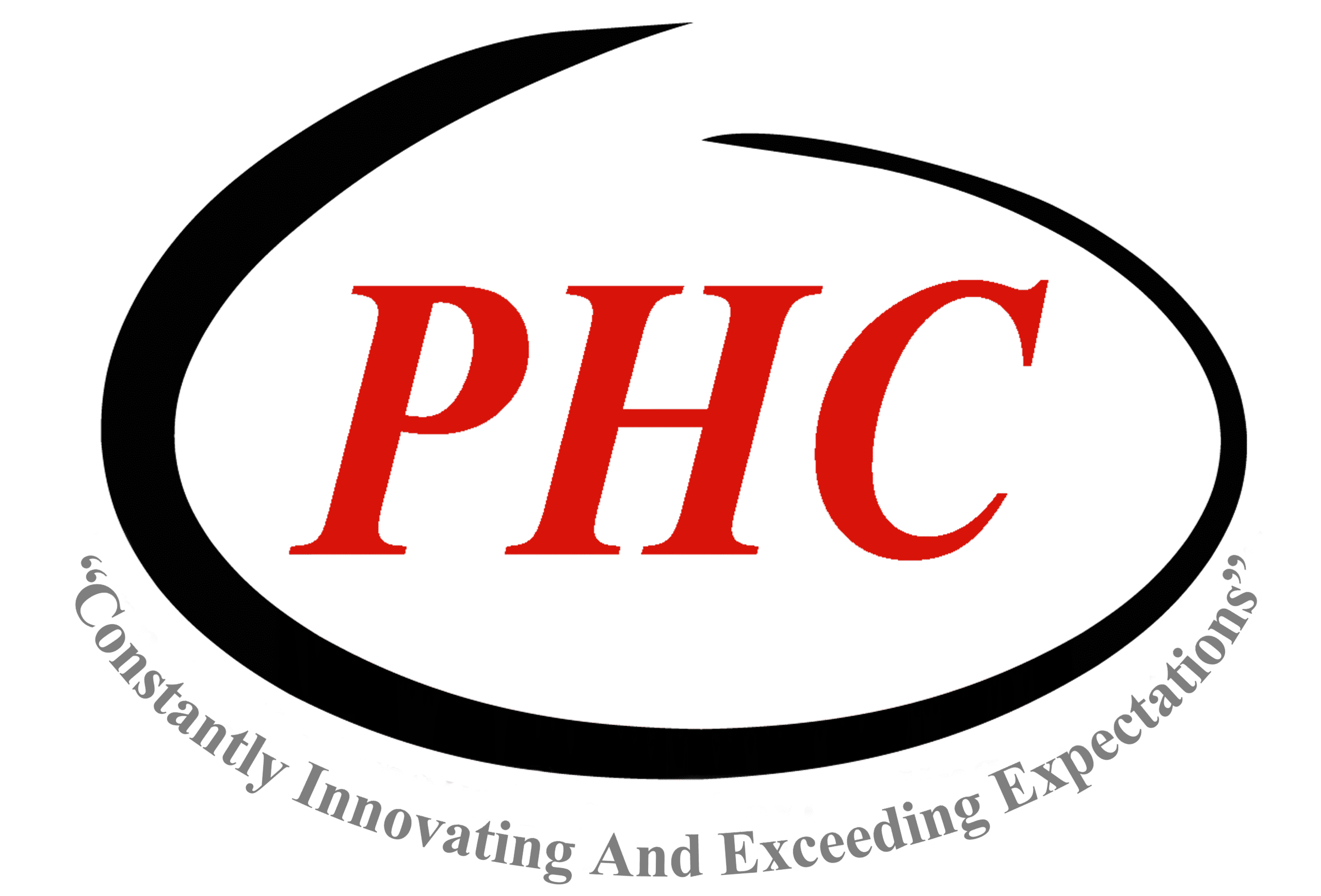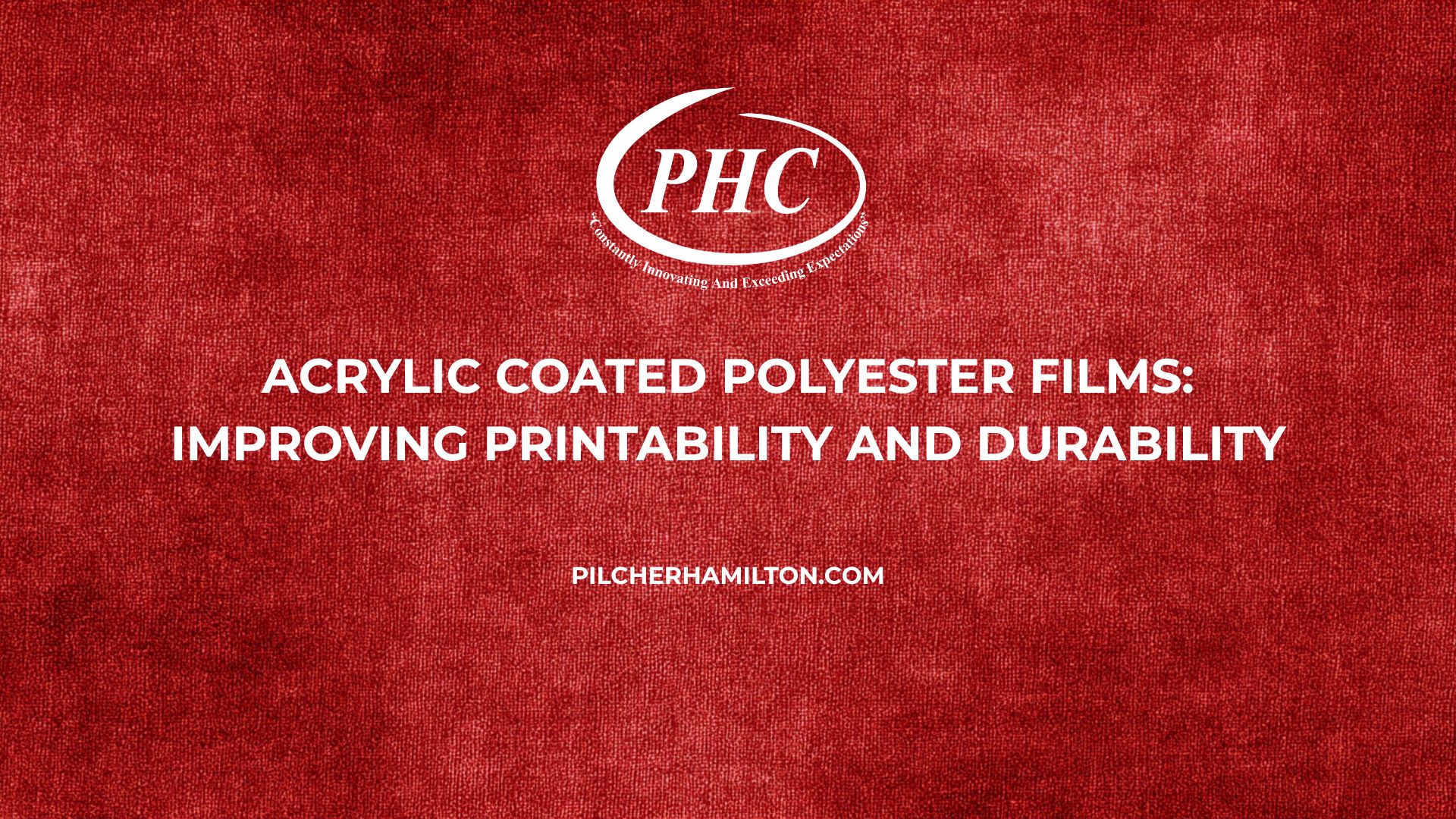When packaging engineers and graphics buyers search for polyester near me, they’re often hunting for a PET solution that prints cleanly, laminates reliably, and endures real production stress. Acrylic coated polyester films—built on dimensionally stable PET/BOPET—deliver elevated surface energy, robust ink anchorage, and interlayer bond strength for demanding packaging, label, and industrial laminations. Pilcher Hamilton Corporation (PHC), at 850 South Buncombe Road
Greer – South carolina, engineers acrylic-coated polyester film constructions with targeted dyne levels, consistent COF, and converting-ready roll builds so your lines run faster with less waste.
Key Takeaways
- Acrylic-coated PET raises surface energy to 46–56 dynes/cm (typ.), enabling crisp graphics, strong ink anchorage, and reliable lamination bonds.
- Common gauges span 48–200 gauge (12–50 µm); thicker polyester films improve stiffness and handling in high-speed presses.
- Tunable COF (≈0.30–0.55) and back-side treatments (e.g., corona) improve web control and downstream adhesion.
- Ideal in reverse-print laminations, in-mold labels, industrial nameplates, and clear barrier stacks where clarity and bond durability matter.
- PHC adds value with slitting, sheeting, winding, and custom coating to tight tolerances—see our All Services.
Acrylic Coating Fundamentals on Polyester
Why polyester (PET/BOPET)?
Polyester film offers a high modulus, excellent dimensional stability, and thermal robustness that paper or some polyolefins can’t match. BOPET (biaxially oriented PET) resists MD/TD shrink at line temperatures, safeguarding registration in multicolor printing and minimizing curl in humid or heated environments.
What does the acrylic layer do?
The acrylic coating creates a high-energy, receptive surface for inks, primers, and adhesives. Properly formulated acrylics deliver:
- High dyne retention for consistent wetting and uniform ink laydown.
- Chemical resistance that protects graphics during handling and post-processing.
- Improved interlayer adhesion in laminations (e.g., PET/ink/adhesive/PE or PET/BON/PET).
Depending on your application, acrylics can be optimized for ink systems (solvent, water-based, UV), blocking resistance, slip, and clarity.
Where does corona treatment fit?
Corona-treated PET raises surface energy temporarily; acrylic coating locks in a more permanent high-dyne surface and adds functional durability. For projects that depend on persistent wettability and robust lamination bonds, many teams step up from corona-only to acrylic-coated grades. For treatment guidance, see PHC’s page on corona-treated polyester.
Enhancing Print and Laminate Adhesion
Print anchorage and dyne targets
- Target surface energy: 46–56 dynes/cm on the acrylic side (verify with dyne pens or test inks).
- Ink sets: Solvent and UV inks typically anchor strongly; water-based systems benefit from the elevated dyne and controlled porosity of the acrylic surface.
- Blocking resistance: Acrylic coatings can be tuned to resist blocking (film layers sticking together) at elevated web temperatures or in tightly wound rolls.
Lamination strength
In reverse-printed polyester packaging films, the acrylic face acts as an anchor for inks and a friendly interface for adhesive tie layers. Typical constructions include:
- PET (acrylic) / Ink / Adhesive / PE for snack webs and pouches.
- PET (acrylic) / Ink / Adhesive / BON / Sealant for higher barrier stacks with improved puncture resistance.
- PET (acrylic) / Ink / Adhesive / Metallized PET when aesthetic metallic looks and light barrier are required.
For a deeper library of base options and service capabilities, browse Film Specs and PHC’s All Products.
Key Specs for Acrylic-Coated PET (Guide Values)
| Attribute | Typical Range | Why It Matters |
| Gauge (µm / gauge) | 12–50 µm / 48–200g (common: 12, 19, 23–25 µm) | Controls stiffness, die-cut behavior, and opacity (thicker → stiffer) |
| Surface Energy (acrylic side) | 46–56 dynes/cm | Enables wet-out for inks/adhesives; reduces mottle and fisheyes |
| Haze / Clarity | ≤ 2% haze (grade-dependent) | High clarity supports reverse-print graphics and optical inspection |
| COF (film/film) | 0.30–0.55 (tunable) | Impacts unwind/rewind control and pouching line stability |
| Heat Resistance | Service to 150–180°C short exposure | Protects register under nip heat; suitable for thermal steps |
| Tensile / Modulus | High vs. polyolefins | Maintains layflat and minimizes web growth at speed |
Engineering note: PET’s Tg (~70–80 °C) and melting point (~250 °C / 482 °F) allow brief high-temperature exposures (e.g., nip zones) without excessive shrink when biaxially oriented.
Acrylic vs. Corona: A Practical Comparison
| Criterion | Acrylic-Coated Polyester | Corona-Treated Polyester |
| Dyne Level (as-supplied) | High, persistent (46–56 dynes/cm) | Elevated initially (≈42–46 dynes/cm), decays over time |
| Ink Anchorage | Strong, durable (resists scuff/chemical) | Good initially; may need re-treat if stored |
| Lamination Bond | Excellent interlayer adhesion | Good, adhesive-dependent |
| Consistency | Lot-to-lot stable | Sensitive to storage and time since treatment |
| Cost | Higher | Lower |
Use acrylic coated polyester films when you require repeatable print quality, aging stability, and tough interlayer bonds—especially for export packs or long inventory cycles. For jobs with rapid print-and-laminate turnaround, corona-only can suffice if managed tightly.
Applications and Use Cases
Flexible Packaging (Reverse Print)
Snack, confectionery, and dry goods benefit from reverse-printed PET laminated to sealant webs. Acrylic-coated PET ensures ink holdout, clarity, and lamination strength, delivering graphics that survive distribution scuffing.
Labels & Graphics
For in-mold labels (IML), nameplates, and appliance panels, acrylic-coated polyester provides an ink-friendly face stock and tough base that resists chemicals, abrasion, and heat—ideal for durable graphics.
Industrial Laminations
In optically clear bonds, liner systems, and functional laminates (e.g., PET/BON/PET), acrylic layers help adhesives wet-in and crosslink, producing consistent peel and shear values over time.
To explore related PET families—such as metallized for light/UV barrier or high-clarity graphic grades—see PHC’s metallized polyester overview and high-clarity graphic grades.
Process and Converting Considerations
Web Handling & COF
Aim for a COF window of 0.30–0.55 to control unwind tension and prevent telescoping in large OD rolls. Specify test method and speed (e.g., 12 in/min, film/film) when ordering to ensure repeatability.
Seal/Lamination Temperatures
While PET itself does not heat-seal, the laminate’s sealant layer (e.g., PE/CPP) drives sealing windows. Typical downstream conditions:
- Pouching jaw temperatures: 250–350 °F (121–177 °C), pressure/time per structure.
- Adhesive cure: Follow supplier guidance; acrylic-coated surfaces support water/solvent/UV adhesives with consistent wetting.
For deeper lamination or coating discussions, consult PHC’s Coating capabilities and Technical Datasheets.
Storage & Handling
Keep rolls wrapped and stored at 60–77 °F (15–25 °C), <60% RH, and away from dust/solvents. Acrylic dyne levels are stable, but cleanliness protects print quality.
Buyer’s Checklist (Order-Ready Items)
- Gauge and base film: 48–200 gauge (12–50 µm); clarity and stiffness requirements.
- Acrylic side dyne target: 46–56 dynes/cm; back-side treatment (corona or primer) if laminating/printing.
- COF target range for your press and pouching lines (e.g., 0.35–0.45).
- Roll build: width, OD, splice policy, 3″/6″ cores, and orientation (acrylic side in/out).
- Ink/adhesive system (solvent, water, UV; polyurethane, acrylic, etc.).
- Aging tests (peel/shear, color, clarity) and acceptance criteria.
- Required services: Slitting, Sheeting, Winding, or custom Coating.
Specification Table (Representative Grades)
| Parameter | Grade A – Print Focus | Grade B – Lamination Focus | Grade C – Durable Graphics |
| PET Gauge | 12 µm (48g) | 19–23 µm (75–92g) | 25–36 µm (100–140g) |
| Acrylic Dyne (as-supplied) | 50–56 dynes/cm | 46–52 dynes/cm | 48–54 dynes/cm |
| COF (film/film) | 0.35–0.45 | 0.30–0.50 | 0.40–0.55 |
| Haze | ≤1.5% | ≤2.0% | ≤2.5% |
| Back-Side | Untreated or low-dyne | Corona 42–46 dynes/cm | Corona/primer for bonding |
| Typical Use | High-res reverse print | PET/ink/adhesive/PE laminates | Nameplates, appliance labels |
Values are guides. PHC tunes acrylic chemistry, dyne level, and COF to your press, adhesive, and end-use.
Emerging Uses and Innovations
- Mono-material PET paths: Acrylic-coated polyester packaging films supporting mono-PET laminations for simplified recycling.
- High-durability labels: Enhanced chemical/abrasion resistance for under-hood and appliance markets.
- Print-on-demand workflows: Acrylic surfaces optimized for inkjet and digital primer systems.
- Hybrid stacks: Combining acrylic-coated PET with BOPET/BON to balance clarity, toughness, and barrier—see PET/BON/PET discussions in our lamination insights.
FAQ
Q1: How is acrylic coated polyester different from corona-treated PET?
Acrylic-coated PET maintains higher, more persistent dyne levels (≈46–56 dynes/cm) and adds chemical resistance for inks/adhesives. Corona-only surfaces may decay over time and often require re-treatment before printing or lamination.
Q2: What gauges work best for print-and-laminate snack webs?
Common choices are 12–23 µm (48–92 gauge)—thin enough for efficient yield, stiff enough for excellent registration and layflat.
Q3: Do acrylic coatings affect barrier (OTR/WVTR)?
Acrylic layers primarily improve adhesion and durability. If barrier is critical, combine acrylic-coated PET with metallized PET or PVDC in a laminate stack, designed to your OTR/WVTR targets.
Q4: Can PHC supply data-backed specifications and roll builds?
Yes—review our Technical Datasheets and coordinate with PHC to lock down dyne, COF, and roll geometry. Our All Services cover slitting, sheeting, winding, and coating.
Q5: Where can I find polyester near me for print-ready laminations?
PHC supports nationwide programs from Greer, South Carolina, delivering acrylic coated polyester films tailored to your print and lamination lines.
Talk With PHC About Print-Ready Acrylic PET
If you’re qualifying print webs and searching for polyester near me, connect with Pilcher Hamilton Corporation for acrylic coated polyester films engineered for adhesion, clarity, and uptime. Review our Film Specs library, explore All Products, or Contact Us to discuss targets for dyne, COF, and lamination strength.
Pilcher Hamilton Corporation
850 South Buncombe Road
Greer – South carolina

